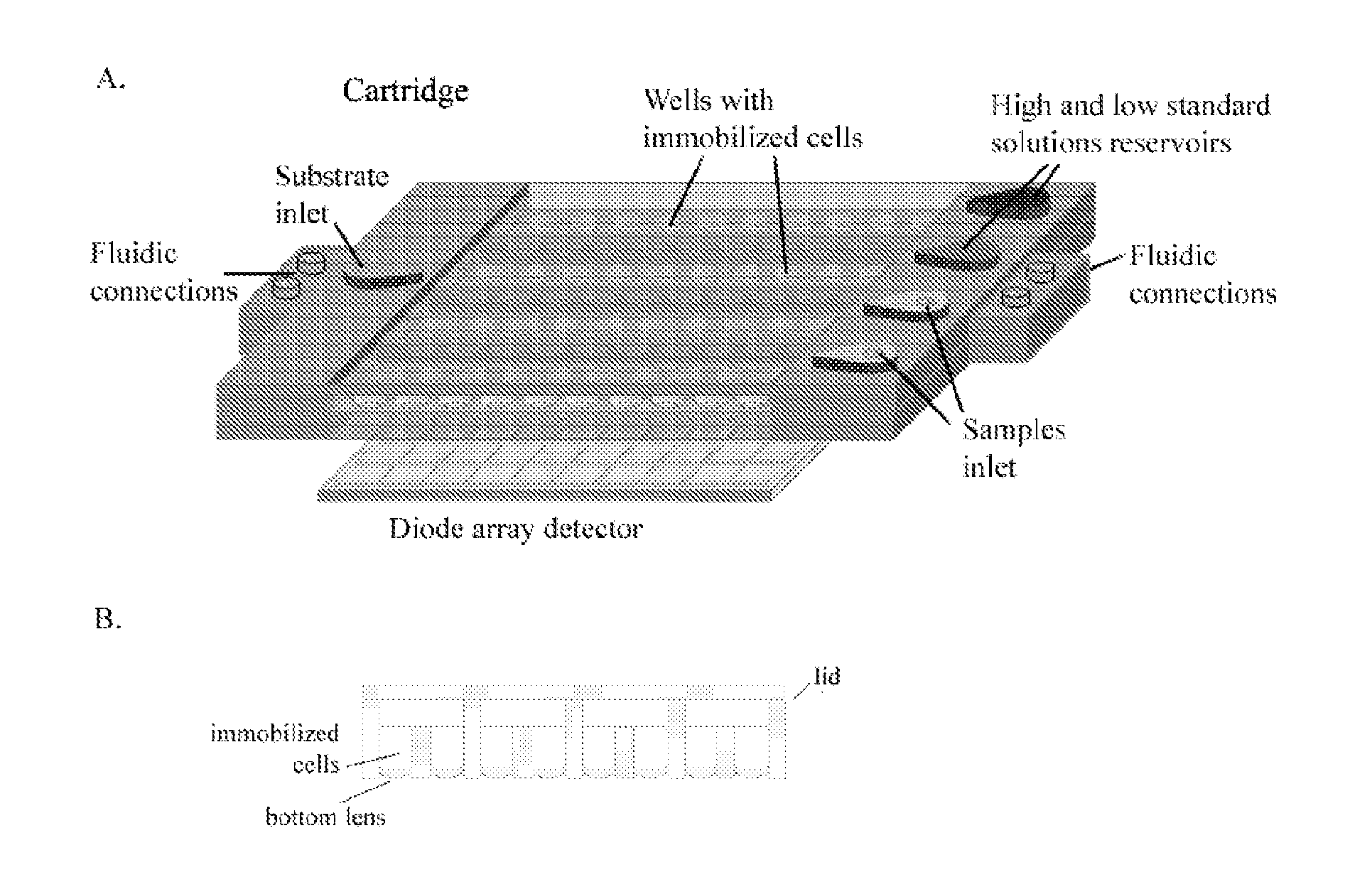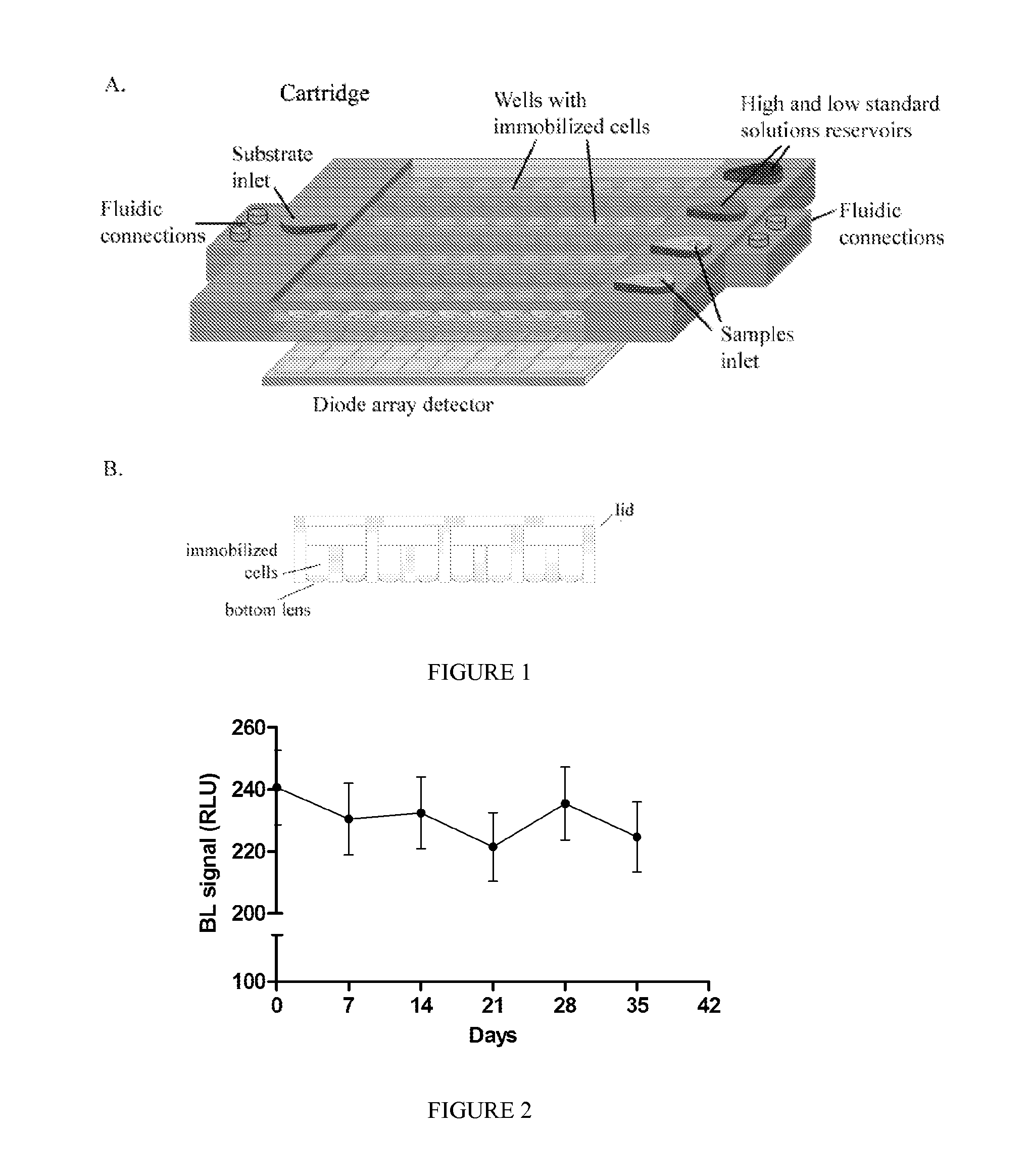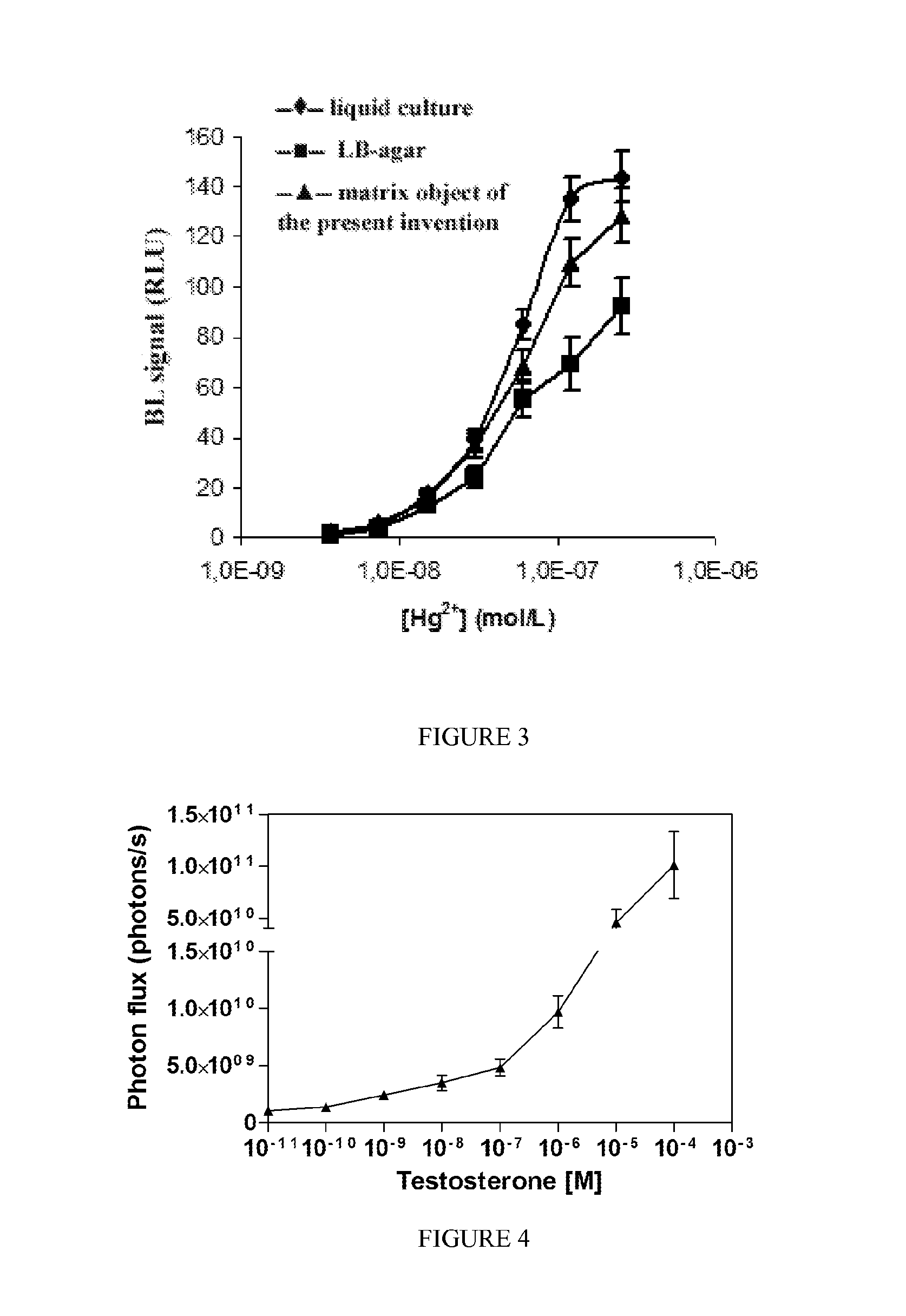Portable device based on immobilized cells for the detection of analytes
a technology of immobilized cells and portable devices, which is applied in the direction of artificial cell constructs biochemistry apparatus and processes, etc., can solve the problems of huge monitoring of contaminated areas, inability to exclude the risk of interruption of the host chromosome, and inability to select suitable and attractive candidates
- Summary
- Abstract
- Description
- Claims
- Application Information
AI Technical Summary
Benefits of technology
Problems solved by technology
Method used
Image
Examples
example 1
[0129]A device as illustrated in FIG. 1 was developed.
[0130]The device comprises a plastic cartridge with a matrix of 10×8 wells: each recombinant cell line is immobilized in a separate well, an array of ultrasensitive light detectors (e.g., avalanche photodiodes), a microfluidic system with pumps for the introduction of the sample, reference standard solutions, and substrate for bioluminescence emission (e.g., D-luciferin, if firefly luciferase is used as reporter protein). This configuration allows to use up to 10 different recombinant cell lines.
[0131]As shown in FIG. 1A, immobilized engineered cells are contained in the disposable transparent plastic-made cartridge, in which different cell strains are immobilized within separate microwells and a microfluidic system allows the introduction of the sample, reference standard solutions (with high and low concentration of target analytes), and substrate for bioluminescence emission.
[0132]Each solution is added in duplicate through a ...
example 2
[0144]A calibration curve for copper was performed by employing recombinant E. coli cells specific for Cu2+ and a control strain that constitutively express firefly luciferase. The use of a control strain allows to correct the analytical signal with a detection limit of 0.05 ppm for Cu2+.
[0145]Cells are grown in selective liquid medium at 37° C. (e.g., Luria Bertani Broth with antibiotic for plasmid maintenance) for each strain up to an optical density at 600 nm in the range 0.6-0.8.
[0146]Then, a buffered solution at pH 6.5-7.5 is added to each cell suspension containing nutrients and is mixed 1:2-1:4 with the immobilization matrix.
[0147]A solution containing 1% atelocollagen in PBS (NaCl 137 mM, KCl 2.7 mM, NaH2PO4 1.4 mM, Na2HPO4 4.3 mM) at pH 7.4 with decorin final concentration 15% w / w atelocollagen.
[0148]Polyvinylpyrrolidone (PVP) and modified polysiloxanes (e.g., polydimethylsiloxane, tetraethyl-orthosilicate) are added to a final concentration of 1% and 0.4%, respectively.
example 3
[0149]Analogously to Example 2, a matrix with the biosensor specific for mercury was prepared.
[0150]As shown in FIG. 3, calibration curves for Hg2+ were obtained with non-immobilized bacteria (in selective ampicillin LB Broth liquid culture (—♦—), with bacteria immobilized in the matrix object of the present invention (—▴—) and bacteria immobilized in conventional matrix (LB / agar —▪—).
PUM
| Property | Measurement | Unit |
|---|---|---|
| pH | aaaaa | aaaaa |
| transparency | aaaaa | aaaaa |
| volume | aaaaa | aaaaa |
Abstract
Description
Claims
Application Information
 Login to view more
Login to view more - R&D Engineer
- R&D Manager
- IP Professional
- Industry Leading Data Capabilities
- Powerful AI technology
- Patent DNA Extraction
Browse by: Latest US Patents, China's latest patents, Technical Efficacy Thesaurus, Application Domain, Technology Topic.
© 2024 PatSnap. All rights reserved.Legal|Privacy policy|Modern Slavery Act Transparency Statement|Sitemap



